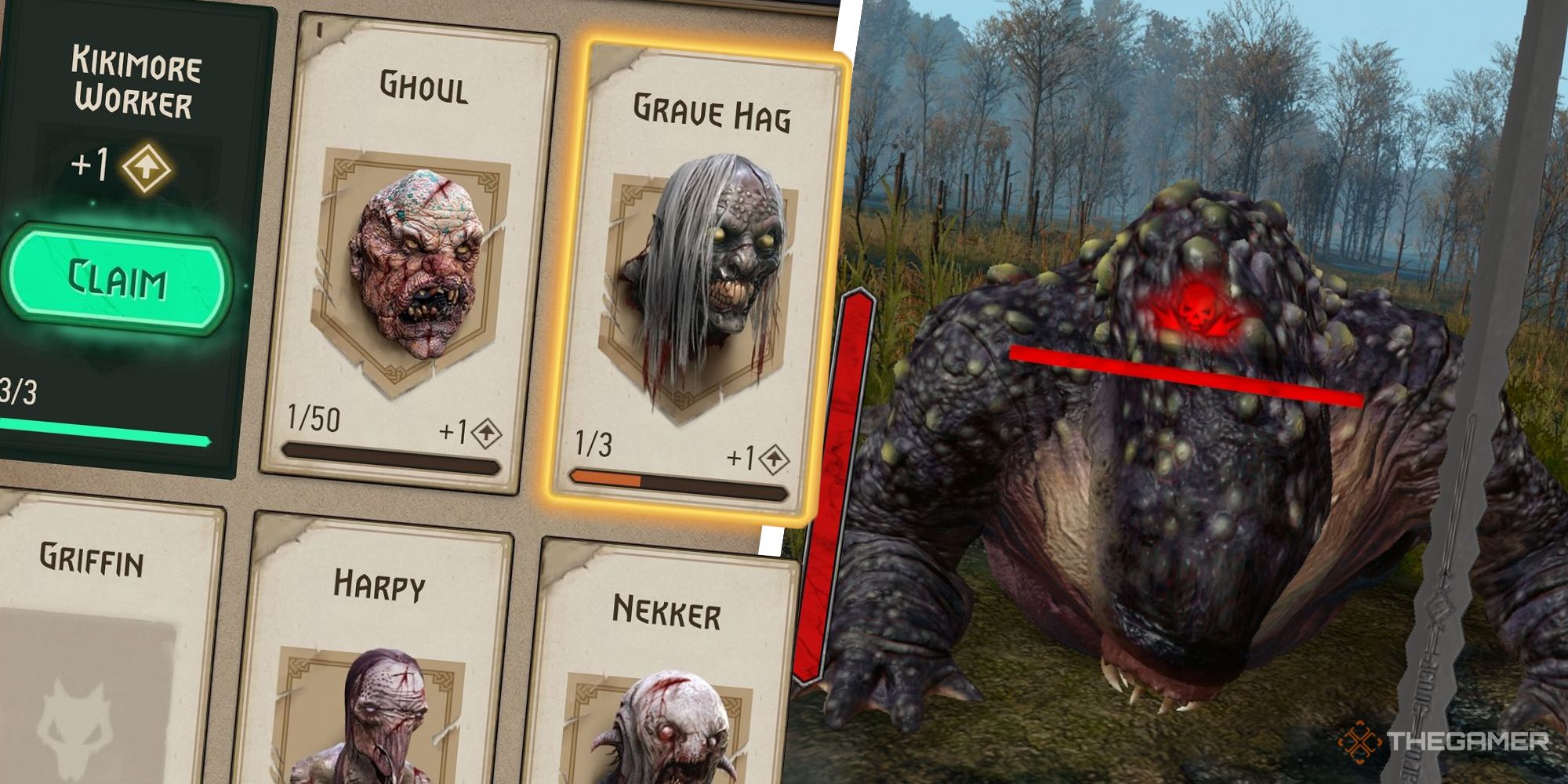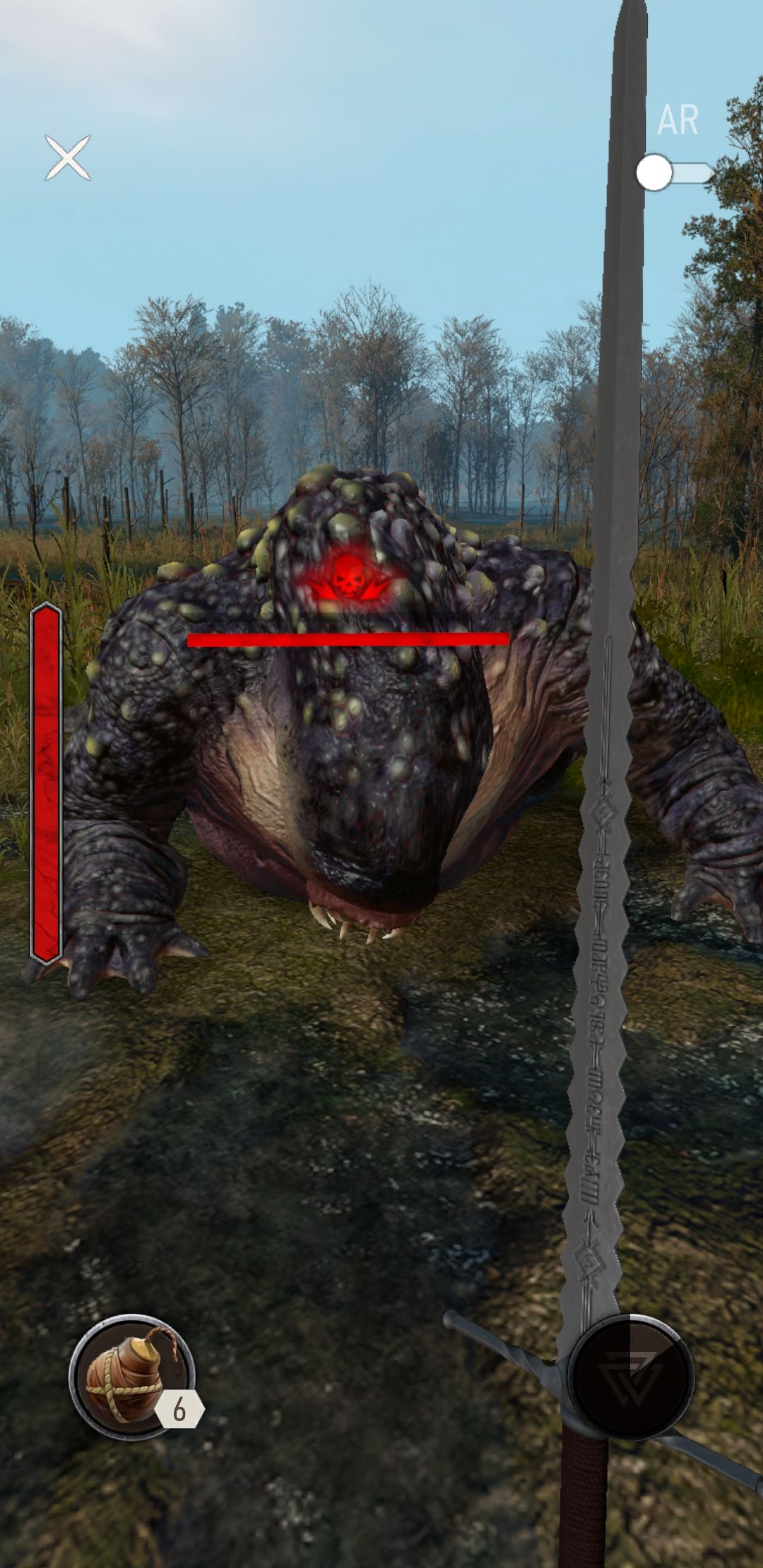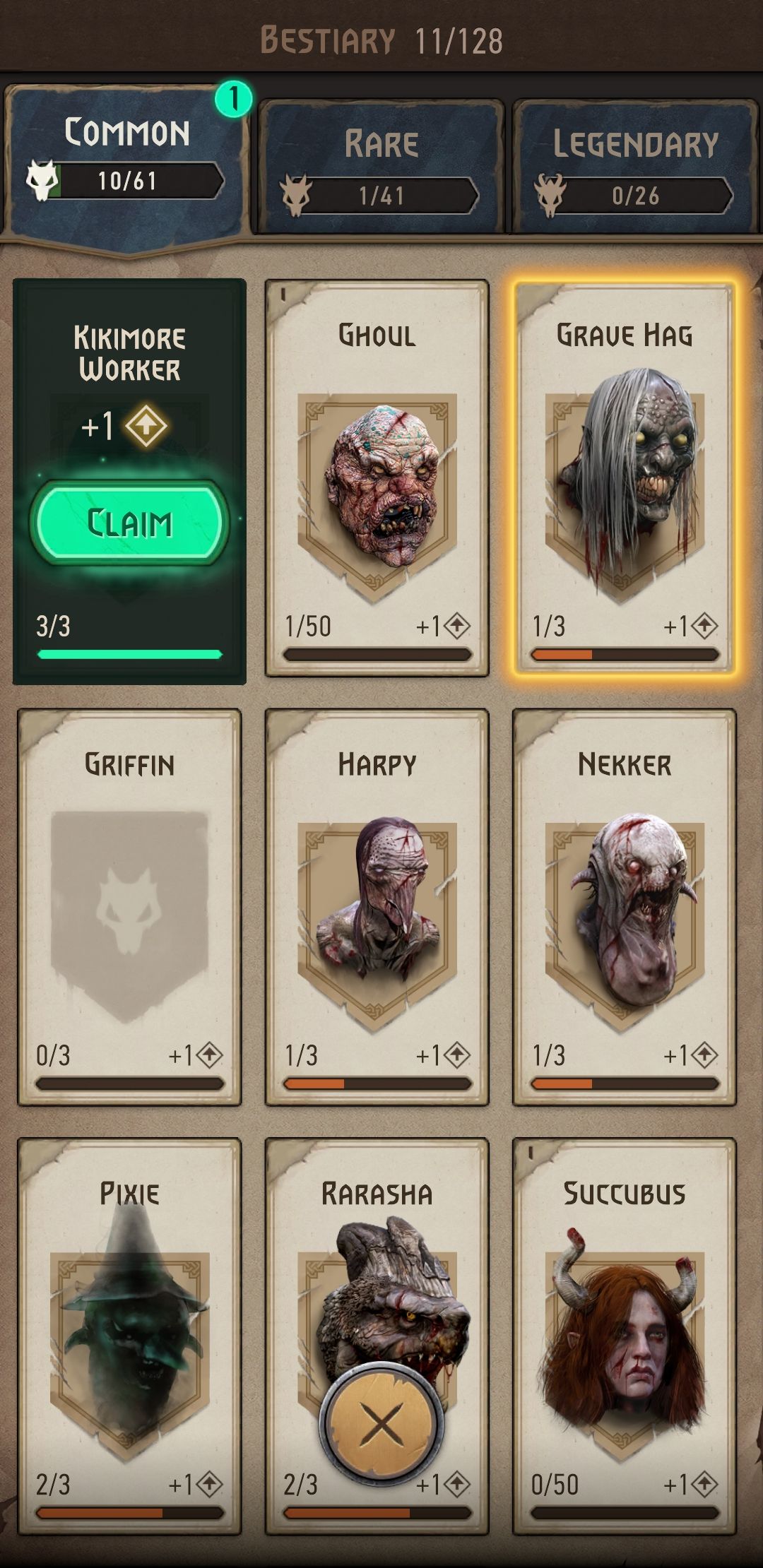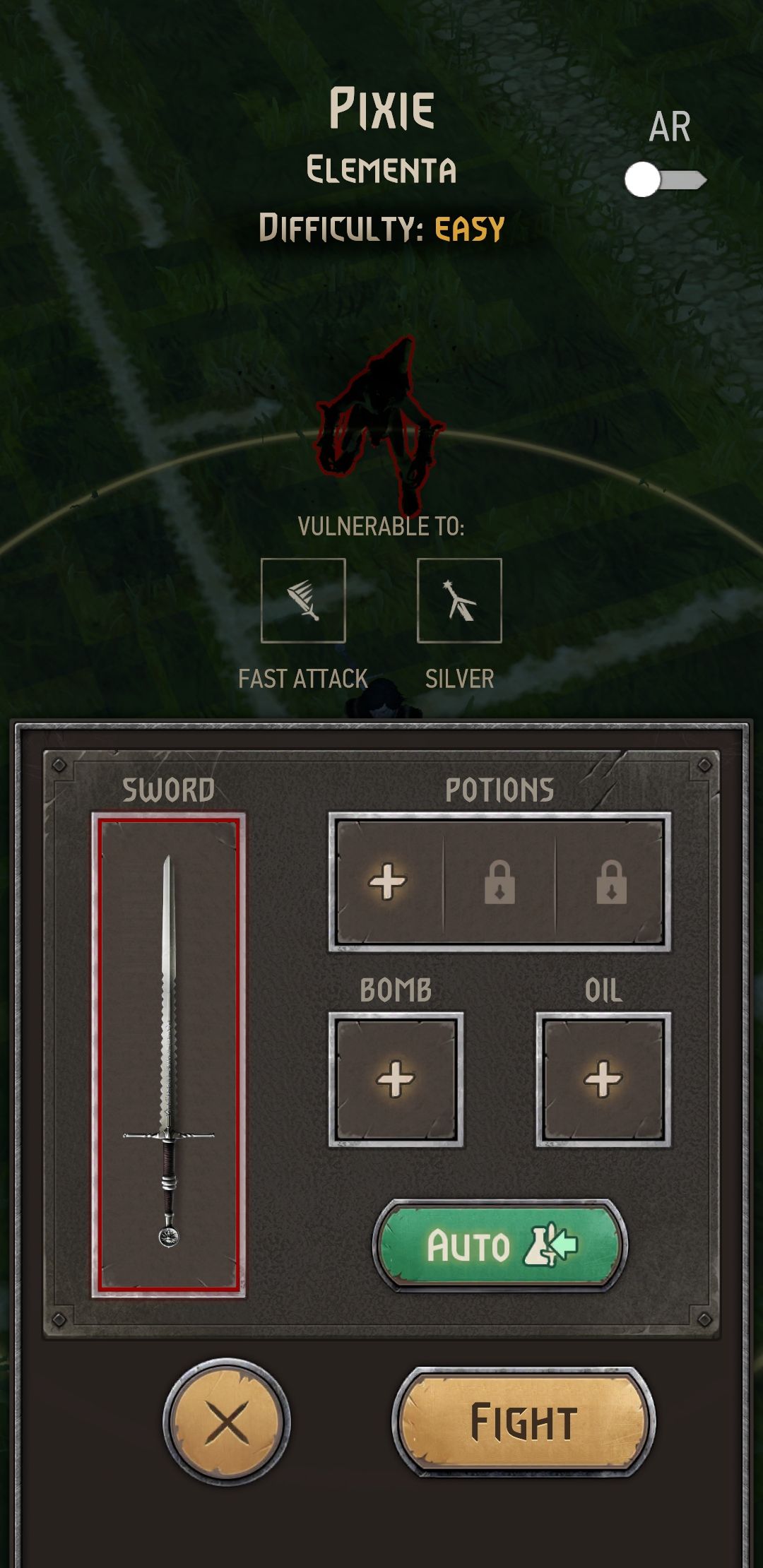When news first broke of a Witcher AR game, a big question at the forefront of many people’s minds was how will the dark and bloody world of The Witcher translate? Now that The Witcher: Monster Slayer is finally here, we have a first-hand look at the answer to that question and are happy to report that, all in all, the transitions went off without a hitch.
While the battle mechanics are reminiscent of the first Witcher game more so than the complexities of The Witcher 3 (which critics of the third installment’s combat interface may consider a good thing.) Read on to learn about the ins and outs of combat in The Witcher: Monster Slayer.
Battle Mechanics
Combat works very much as you would expect from a Witcher title, with having to observe and analyze each unique monster to pinpoint its strengths and weaknesses and having to watch your opponent for opportunities to attack, counter, and parry.
Fast and Strong Attacks
Fast and Strong Attacks are going to be your go-to common attacks. You’ll execute them both the same way by swiping across your screen. Differentiating between them is a simple matter of timing your strikes. Firing off a bunch of strikes like you’re in an intense bout of Fruit Ninja will produce a flurry of Fast attacks while waiting for a beat between strikes will result in a Strong attack.
Critical Attacks
Critical Attacks are charge attacks that are charged up by executing Fast and Strong strikes. The progress is marked by a golden meter above the monster’s health bar. When charged up, a gold circle will appear in the middle of the screen that you must tap as the matching gold sword icon passes over it. You can fill the critical meter faster by striking the monster in the style they are weak to. You’ll be able to view a monster's weaknesses before engaging them, once you’ve selected them from the overworld. However, only once a species is registered in the Bestiary after your first encounter with a new monster, will the monster’s weaknesses appear on the battle preparation screen.
Signs
Signs serve as another type of special attack and are a rudimentary implement at this stage of the game. The ability to cast signs charges automatically on a timer from the start of a battle, meaning you won’t be able to enter battle blasting igni. Casting will need to recharge after each use as well, so even with monsters that are most susceptible to signs, prepare to spend the time in between charges chipping away at their health with Fast and Strong strikes.
Bombs
You are also able to throw bombs to gain an upper hand on monsters by tapping the icon in the lower left of the battle screen, but you will need to craft and equip them during your battle preparations first. We'll discuss these in more depth a little later on.
Parry
It's also important to develop your parrying skill and parry each possible attack. Much like Geralt, your custom witcher character is not innately tanky. And to start, you’re only able to cast igni, which isn’t immensely helpful against fire breathing wyverns or flame wielding succubi. In this way, the game forces you to think and adapt like a true witcher.
Adaptive Fighting Tactics
You’ll need to analyze your opponent to decide what combination of attacks will be most effective. Read your opponent’s movements for when to attack and more importantly, when to parry. This can be the most fickle and realistically nerve-wracking part of the experience as the best time to pull up your sword in defense is often just as the blow is about to land.
Most of the creature AIs seem to be programmed to simulate a natural flow of energy, so if you think about deflecting or redirecting their offensive energy, you are often going to want to meet that energy with your own, rather than bracing for the blow as they're winding up. This can often mean you have to wait for longer than you’re comfortable with.
Often times a "Perfect" parry is achieved when you pull up your sword instinctively to protect against an unexpected attack, or just when you think it is too late. But do mind that there may be a delay in reaction time when attempting to parry an incoming attack amidst a flurry of your own assaults. This is likely dependent on how well your device handles the game. Cat-like reflexes are going to be important for parrying any monster, as they all have the ability to strike unexpectedly, or without ample time to recover from your offensive strikes.
Keep in mind, monsters can attack in a variety of ways. Some creatures, such as Pixies, are capable of striking swiftly multiple times in a row, others from the sky, some with forceful blows, others with swift assaults, fire, and still more capable of using a terrifying combination of them all.
It may sound repetitive, but combat in The Witcher: Monster Slayer really boils down to studying the patterns and weaknesses of each species and adapting your style accordingly.
Preparing For Battle - Crafting & Equipping Potions, Oils, and Bombs
Also true to the witcher code, a discerning witcher will always prepare before battle and avoid being taken unawares. Meaning, just like the PC and console experiences, proper preparation is key.
You’ll pick up ingredients from slaying monsters and from shrubbery that spawn in the overworld. Then you can head to your inventory tab to begin crafting. Selecting the crafting station will open a page with all of the recipes you can create. Recipes you lack the requisite ingredients for will be grayed out with a list of the required ingredients at the bottom to show you what component(s) you’re missing.
It’s a good idea to brew Basic Bombs and Oils at first, along with the Thunderbolt potion to give you an all-around boost and cover your general basis. But after getting a small store of the basics, begin focusing on stocking up a variety of potions, bombs, and oils, as you’ll get more of the generic items upon each level up.
Basic Oil only provides 33% boosts, while oils brewed to aid against a specific class of monster apply a 100% damage boost against that type. Similarly, Basic Bombs only deal Kinetic damage, while the other bombs deal specialized damage in addition to the Kinetic damage. Brewing a variety of potions will be beneficial as the monsters you come up against get tougher and begin to vary more widely in their weaknesses and abilities.




